Per- and Poly-fluoroalkyl Substances (PFAS)
(Invisible Threat in Our Water)
The human-made chemical class known as per- and poly-fluoroalkyl substances (PFAS) has recently been under intense scrutiny for reasons including its extensive use, environmental persistence, and possible negative impacts on human health. The distinctive qualities of PFAS, which include thermal stability, resistance to water and grease, and strong carbon-fluorine bonding, make them a class of synthetic chemicals.The environmental permanence and potential health dangers of PFAS have sparked concerns and led to substantial investigation, despite the fact that these features make them desirable in a variety of consumer and industrial applications.

Chemical Structure and Classification
Perfluorinated carbon chains, which consist of organic molecules with fluorine atoms linked to carbon atoms, are known as PFAS. "Per-" in PFAS means that the carbon chains are completely fluorinated, and "poly-" means that there are many repeating units. Among PFAS, perfluorooctanoic acid (PFOA) and perfluorooctane sulfonate are the most famous and researched (PFOS). These compounds have a wide range of structures, characteristics, and actions; they are PFAS.
There are two primary groups into which PFAS fall:
- Perfluoroalkyl acids (PFAAS) and
- Fluorotelomer-based PFAS.
The completely fluorinated carbon backbone gives PFAAs like PFOA and PFOS their stability and endurance. Telomers are short-chain polymers that alternate between carbon and fluorine atoms; chemicals generated from these telomers are known as fluorotelomer-based PFAS. This adds another layer of complication to the PFAS family because these compounds can break down into PFAAs and other substances.
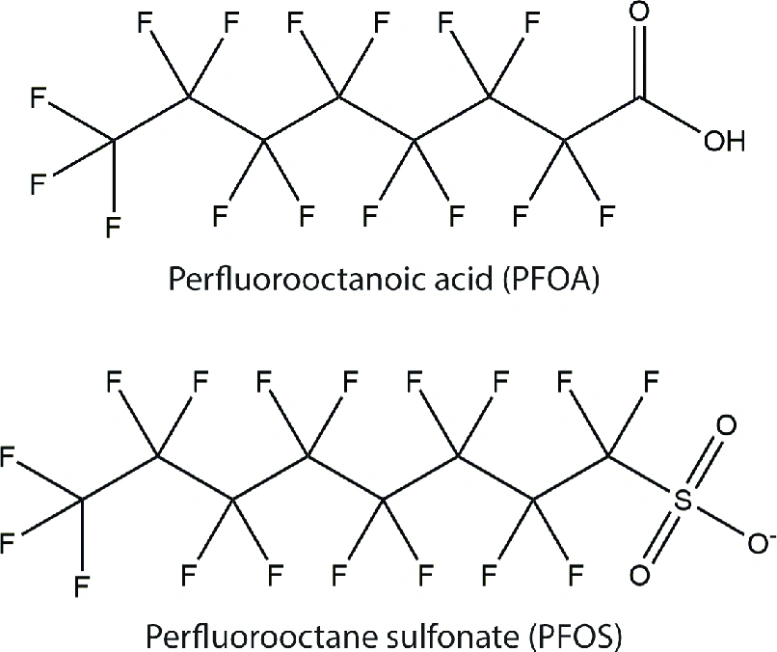
Applications of PFAS
The special characteristics of PFAS make them useful in many different kinds of products, both for industry and the general public. Among its most prominent applications is the creation of coatings that protect fabrics, paper, and packaging against water and grease. Aqueous film-forming foams (AFFF) are firefighting foams that use PFAS-based coatings to put out flammable liquid fires in airports, military bases, and industrial facilities.
Coatings aren't the only place you'll find PFAS; you can also find them in non-stick cookware, food packaging, and carpet and upholstery stain treatments. Semiconductors, electronics, and hydraulic fluids for aircraft all benefit from their resistance to water and oil. The environmental and health effects of PFAS have prompted regulatory actions and heightened scrutiny, notwithstanding their extensive use and efficacy in these contexts.

Environmental Persistence
The extraordinary environmental durability of PFAS is one of their defining features. Environmental degradation processes are unable to break down PFAS because of their strong carbon-fluorine linkages, which also render them useful for specific uses. Consequently, PFAS have the ability to bioaccumulate in living things and can contaminate the environment (air, water, and soil) due to their persistence.
Surface water, groundwater, soil, and even faraway places like the Arctic have all shown traces of these compounds. The concern over the long-term effects of PFAS on ecosystems and the different ways in which humans could be exposed derives from the fact that they remain in the environment.
Human Exposure and Health Concerns
Polluted air, water, food, and consumer goods can expose humans to PFAS by ingestion, inhalation, or skin contact. Some communities' drinking water supplies have been found to contain PFAS, especially those located close to factories that produce or utilize these chemicals. Since PFAS can accumulate in both plants and animals, its contamination in food and agricultural products can also lead to human exposure.
Concerns about PFAS exposure have been associated with numerous health studies. The immune system, thyroid, liver, and reproductive organs have all been linked to the harmful consequences of PFOA and PFOS in particular. Furthermore, some studies have shown a correlation between PFAS exposure and cancer. People are worried about the long-term health impacts of continuous exposure to PFAS because of their capacity to accumulate in the human body.
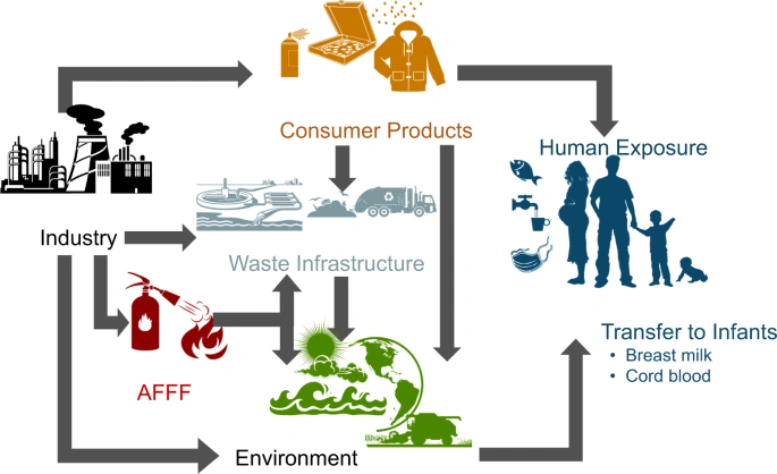
Regulatory Measures and Risk Mitigation
Worldwide, regulatory organizations have implemented measures to manage and control the use of PFAS after realizing the dangers these compounds pose to the environment and human health. There are PFAS content restrictions in water, soil, and other environmental media that have been set by certain nations and areas. Restrictions on the manufacturing and use of certain PFAS chemicals are also included in regulatory regulations.
The US EPA is now evaluating and regulating other PFAS in addition to issuing health advisories for PFOA and PFOS. Additionally, the European Union has limited the use of specific PFAS in goods such as food packaging as part of its efforts to regulate these substances.
The discovery of substitute compounds with lower environmental persistence and toxicity is a common strategy to eliminate PFAS contamination. For uses like water-resistant coatings and firefighting foams, researchers are still trying to find safer alternatives to PFAS. Improvements in the remediation of water and soil contaminated with PFAS are also being worked on.
PFAS contamination of water
The mobility and permanence of per- and poly-fluoroalkyl compounds (PFAS) have made their pollution of water sources a significant environmental problem. To effectively manage and mitigate this issue, it is necessary to understand how PFAS contaminate water, where they come from, and the pathways they enter aquatic systems.
Sources of PFAS Contamination
Both point and non-point sources are the main causes of PFAS contamination in water. Industrial establishments that produce or use PFAS in their processes are considered point sources. Point source contamination occurs, for example, at facilities that use firefighting foams containing PFAS and in companies that produce textiles, paper, and electronics. These industrial locations have the potential to introduce PFAS into nearby bodies of water through their wastewater discharges.
Diffuse runoff from places where PFAS-containing items are used or disposed of is one example of a non-point source of PFAS pollution. Airports, landfills, and military training locations are common examples of non-point sources. So are places where firefighting foams have been used, either for practice or in real fires. Groundwater contamination can occur as a result of PFAS leaching from products that contain these chemicals that are disposed of in landfills.
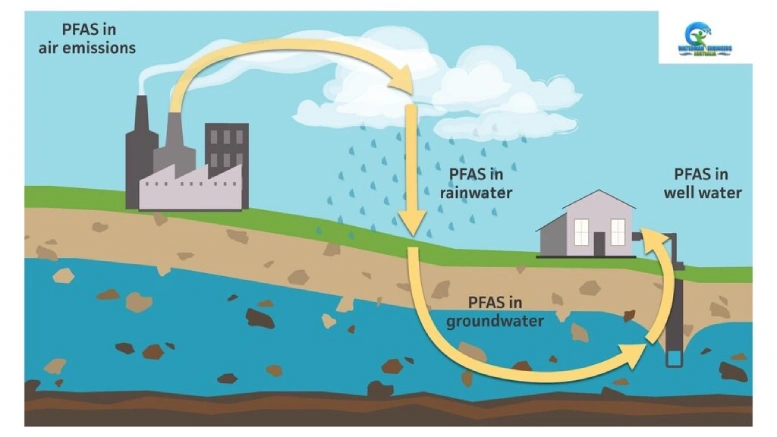
Water Transport and Fate
Once introduced into the environment, PFAS have the ability to stay in water for long periods of time and can be transferred by multiple channels. Because of their exceptional characteristics, such as their invulnerability to deterioration, PFAS are able to traverse great distances with ease.
Surface Water Contamination
Direct emissions from factories or runoff from polluted regions are two ways PFAS might end up in bodies of surface water. Bioaccumulation in aquatic creatures is a potential problem once PFAS accumulates in sediments in surface water. The biomagnification of PFAS in the food chain can occur when fish and other aquatic organisms absorb them from sediments and water.
Groundwater Contamination
Concerns about PFAS contamination of groundwater are especially acute. Because these compounds don't break down easily, they might seep into groundwater over time. Several variables, including soil type, groundwater flow rates, and PFAS chemical specifics, might affect the rate and mode of migration. Contamination of groundwater can cause PFAS plumes to form, which can then travel great distances and contaminate the drinking water supply of both urban and rural areas.
Drinking Water Contamination
The effects of PFAS pollution on water supplies are among the most pressing environmental issues. Near industrial facilities and military installations, where PFAS-containing materials and firefighting foams have been utilized, PFAS has been found in drinking water supplies around the world. Both surface runoff into bodies of water that people consume and subsurface PFAS infiltration into aquifers are potential sources of contamination.
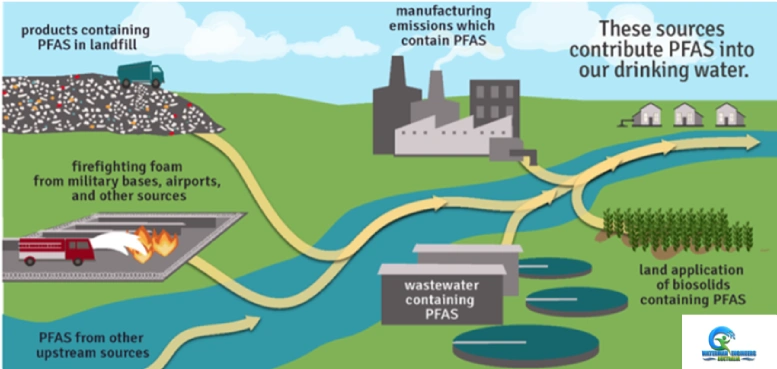
Problems arise for water treatment facilities when PFAS remains in water sources. The presence of PFAS makes traditional water treatment techniques including flocculation, sedimentation, and coagulation ineffective. Activated carbon, a popular technique for organic pollutant removal, is also ineffective against PFAS. To properly remove PFAS from drinking water, advanced treatment technologies such granular activated carbon and ion exchange are generally necessary.
Atmospheric Deposition
There are a number of ways PFAS might get up in water bodies, including direct discharges, runoff, and atmospheric transfer. If PFAS in the air settles onto surfaces, such water, this is called atmospheric deposition. PFAS can be in the form of particles or vapor. In places far from industrial operations, atmospheric deposition can be a major source of PFAS, adding to their global dispersion.
Column Preparation:
A major contributor to the extensive pollution of water sources by PFAS is its ability to stay in the environment. Because of their robust carbon-fluorine bonds, PFAS are unable to be broken down by the body's natural mechanisms. The environmental persistence of PFAS, once discharged, can be measured in years or even decades. Ecosystems and human populations are both made more vulnerable by this persistence.
Health Implications
People who depend on contaminated water sources are understandably worried about the possible health repercussions of this contamination. Fish and other shellfish can acquire PFAS over time, and humans can be exposed to them through drinking polluted water. According to studies, damage to the liver and kidneys, suppression of the immune system, thyroid abnormalities, and an increased risk of specific cancers are just some of the health issues that have been associated to PFAS exposure, according to studies.
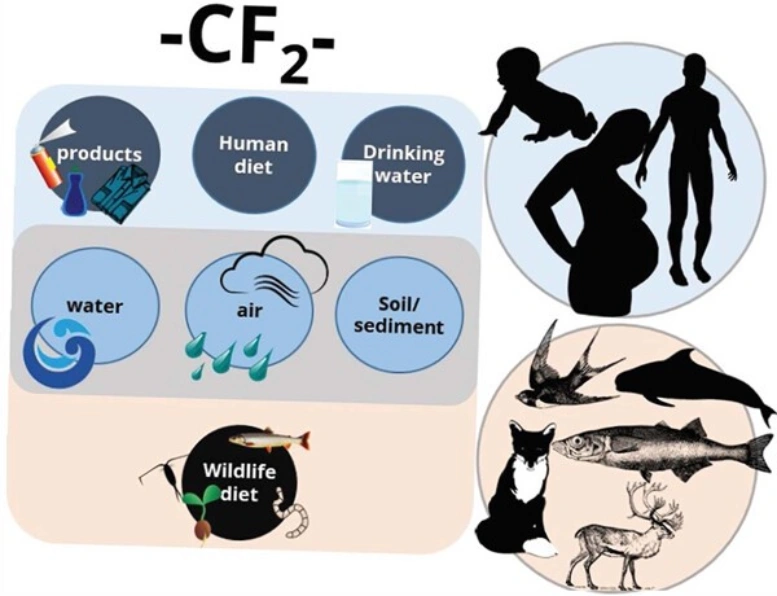
Regulatory Responses
Regulatory bodies worldwide have taken action to resolve the PFAS contamination crisis as a result of the increasing public knowledge of the problem. While additional PFAS are still in the process of being regulated, the EPA in the US has set health advisory levels for PFOA and PFOS in water drinking supplies. There is continuous study to gain a better understanding of the health concerns linked to various PFAS chemicals, and certain states have established their own regulatory requirements.
The Stockholm Convention is an international treaty that regulates persistent organic pollutants; it has contemplated including some PFAS in its controlled substances list. Many nations have followed the lead of the European Union and imposed limits on the use of specific PFAS in food packaging and other items in an effort to control the global supply of these chemicals.
Mitigation and Remediation
There are two main approaches to reducing PFAS contamination: prevention and remediation. The creation and implementation of substitute chemicals that are less harmful to the environment and have a shorter half-life are examples of preventative actions. Finding suitable alternatives to PFAS in a variety of contexts, including water-resistant coatings and firefighting foams, is an active area of research.
The removal of PFAS from polluted water sources is the primary goal of remediation efforts. Both municipal and industrial wastewater undergo treatment using state-of-the-art technology, including ion exchange, membrane filtration, and activated carbon adsorption. The specific PFAS compounds present, and the properties of the water source determine which technology is most suited, however these approaches can be costly.
Health And Environmental Effects Of PFAS
There is rising worry about per- and poly-fluoroalkyl compounds (PFAS) because of their persistence in the environment, potential health impacts, and extensive use. Developing measures to reduce the detrimental repercussions of PFAS requires a thorough understanding of their impacts on human health and ecosystems.
Human Health Effects
1. Bioaccumulation and Biomagnification Because of their bio accumulative qualities, PFAS can build up in living things' tissues with time. Because PFAS can bioaccumulate in seafood, it is especially worrisome in aquatic habitats. Biomagnification occurs when PFAS concentrations at higher trophic levels rise due to predators eating polluted food. Because PFAS can penetrate human tissues and build up, this presents a direct threat to individuals who eat polluted seafood.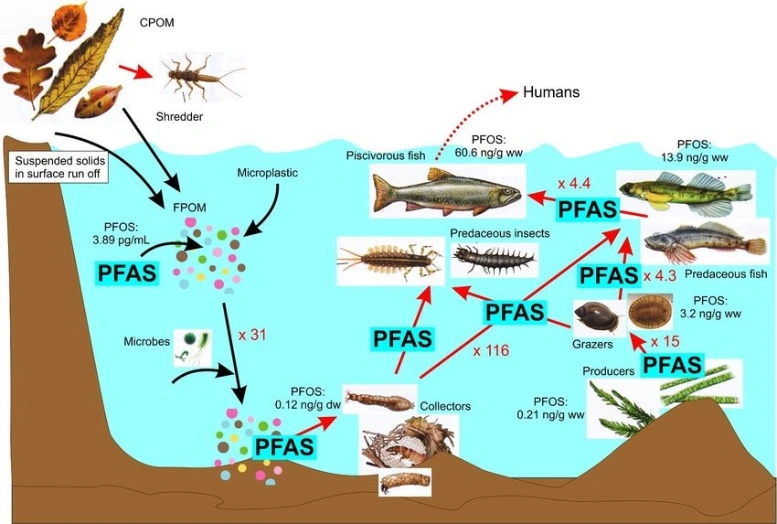
Researchers have found that PFAS exposure can harm the kidneys and liver. PFAS includes perfluorooctanoic acid (PFOA) and perfluorooctane sulfonate (PFOS). There is evidence that alterations in kidney function and liver damage can occur when these substances are present in the bloodstream at elevated levels. Diseases of the liver and kidneys may arise as a result of long-term exposure to PFAS.
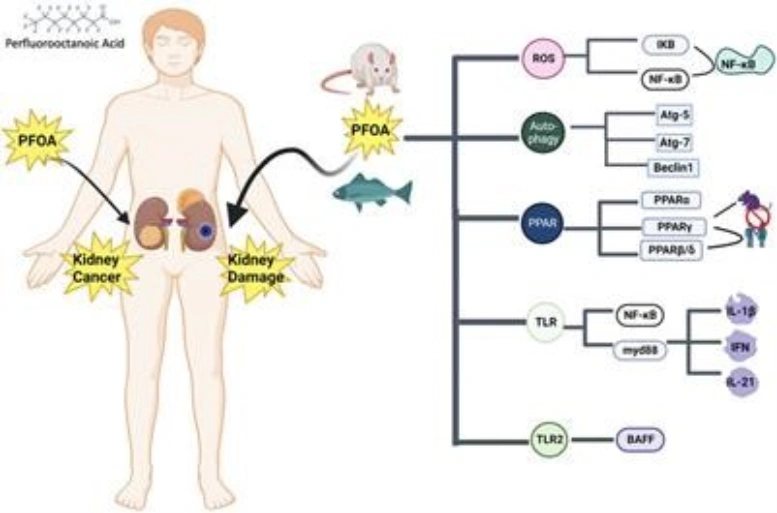
Exposure to PFAS may have immunosuppressive effects, according on the available research. Because a compromised immune system increases a person's vulnerability to disease, this is a very worrisome health effect. Exposure to PFAS has been linked to changes in immune response in animal and human studies.
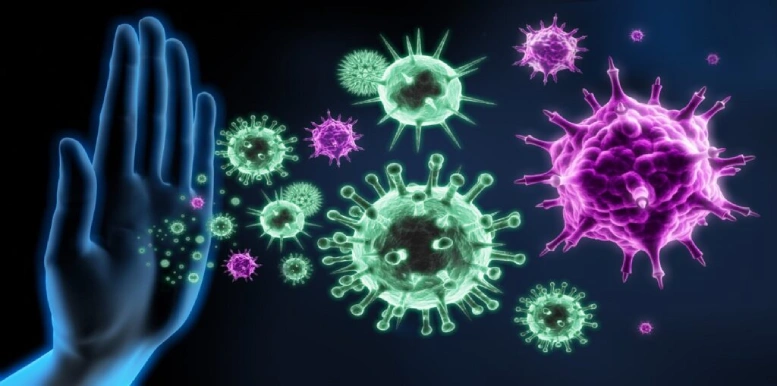
Disruptions in thyroid function have been associated with PFAS exposure. Thyroid hormones are involved in metabolism, growth, and development; however, PFOA and PFOS may disrupt their production and regulation. Disturbances to the thyroid can impact a person's health in many ways.
5. Reproductive and Developmental EffectsConcerns regarding the possible effects of PFAS on reproductive and developmental health have been brought to light by research. Reduced fertility altered hormone levels, and negative effects on foetal development have all been linked to PFAS exposure, according to some research. Children exposed to PFAS during pregnancy may have developmental delays and low birth weight.
6. Cancer RiskSome PFAS are known to have carcinogenic properties. Animal studies have linked PFAS exposure to tumor formation in various organs, including the liver and pancreas. Prolonged exposure to some PFAS compounds has raised concerns about an elevated risk of certain malignancies, although studies in people are still in their early stages.
Environmental Effects
1. Ecosystem DisruptionThe pollution of aquatic habitats with PFAS can lead to negative consequences. Many aquatic creatures are negatively impacted by the bioaccumulation and biomagnification of PFAS, which throw ecosystems out of kilter. In instance, PFAS can cause physiological changes in fish, and they may also cause reproductive and developmental problems in aquatic animals. Changes to aquatic ecosystem function and biodiversity can be triggered by disturbances to these systems.
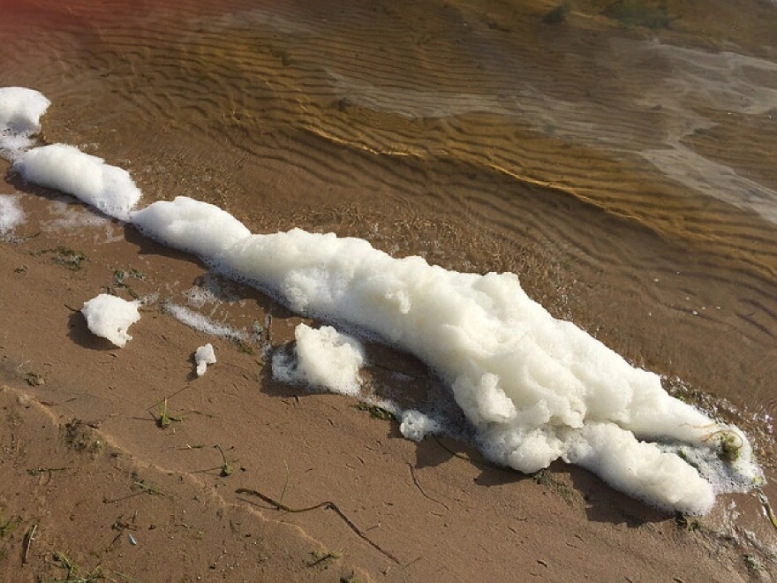
Soil PFAS accumulation can occur via multiple routes, including the usage of PFAS-containing items, irrigation with polluted water, and the application of PFAS-containing sludge. When PFAS enters the soil, they can stay there for a long time, endangering plant life and other species that live in the dirt. Plants can absorb PFAS, which means they can contaminate food crops and put people at much greater risk of exposure.
In places where firefighting foams have been deployed or where items containing PFAS are prevalent, terrestrial wildlife may be impacted by PFAS contamination. Animals, including birds and mammals, have been discovered to contain PFAS in their blood and tissues, according to studies. Wildlife exposed to PFAS may experience behavioral abnormalities, immune system impairments, and altered reproductive success, among other health complications.

The atmosphere can carry PFAS for great distances. The global dispersion of PFAS is aided by atmospheric movement, which is a problem even in areas distant from industrial sources. It is difficult to manage and regulate PFAS on a worldwide basis due to its long-range movement.
Regulatory Response and Risk Mitigation
1. Regulatory MeasuresRegulatory bodies worldwide have moved to control and limit the use of PFAS after realizing the dangers these chemicals may pose. Limits for various environmental media are being evaluated for regulation, and some nations have set drinking water guidelines for certain PFAS. Restrictions on the production and use of specific PFAS chemicals are also being considered.
To determine the extent to which exposure to PFAS poses dangers to human health and the environment, risk assessments are carried out. Toxicity, exposure routes, and bioaccumulation potential are some of the criteria taken into account in these evaluations. The efficiency of regulation measures can be evaluated, and problem regions can be identified through monitoring programs that track PFAS concentrations in biota, water, soil, and the air.
Finding less harmful substitutes for PFAS is a continuous effort. Alternative compounds with desirable qualities but none of the health and environmental hazards of PFAS are being investigated by researchers and businesses. More efficient ways of eliminating PFAS from polluted water sources are also being worked on through the pursuit of treatment technology developments.
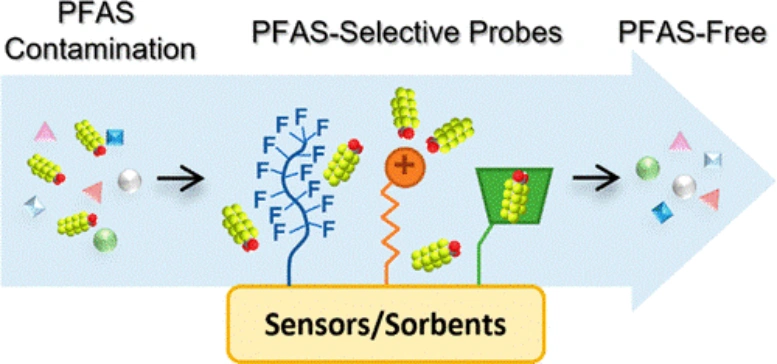
WATERMAN ENGINEERS AUSTRALIA will help you to remove/control your PFAS problems for water/wastewater/soil.


